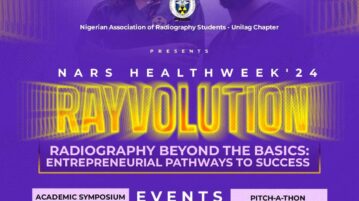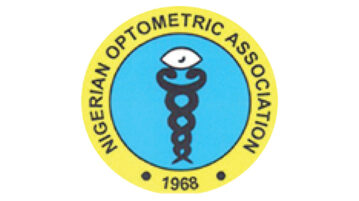In June 2022, the video of a young doctor being locked up by a nurse on the hospital ward made waves on the internet. Offline as well, this case – which happened in Obafemi Awolowo University Teaching Hospitals Complex (OAUTHC), Ile-Ife – caused some significant reactions among the different professional bodies involved i.e., Association of Resident Doctors (ARD- OAUTHC) and National Association of Nigeria Nurses and Midwives (NANNM- OAUTHC).
For a long while, various cases of rivalry among healthcare professionals – usually manifesting as different types of harassment, abuse and power tussle, especially in health administrative and hospital settings – has been reported. But most times, these cases are never taken beyond reporting, with “culprits” and “offenders” getting away with their unprofessional actions. Commonly, these acts of rivalry are found among Doctors and Nurses, extending to Laboratory scientists, Pharmacists and other members of the healthcare delivery team, with each member capable of been the “oppressor” or “perpetrator” of these acts, as well as the “victim” on the receiving end.
Like the case of the Female House officer versus the Female Nursing Officer in OAUTH, many other cases have reported where the nurse was the assailant (i.e., a nurse physically assaulting or verbally abusing the doctor on duty and vice versa). However, this OAUTH case stands out because of the nuances – actions, reactions and inactions – surrounding it.
For objectivity’s sake, only evidences available, known facts, expert opinions and stakeholders’ commentaries – as it pertains to this case and patients care involving healthcare professionals “on the ward” – would be made reference to and used for discussion in this article. Largely keeping in view that the medical and nursing profession can be independent or dependent – but always intertwined – depending on the setting, speciality or sector of healthcare, in which they are domicile.
Background
Following any sterile bed-side procedure (in this case, a central line insertion), the medical waste generated is to be properly discarded by the appropriate healthcare team member involved. In an ideal tertiary health facility setting, such procedures should be carried out with all appropriate healthcare team member present. Which include the doctors coming to the ward (usually made up of Residents with or without supervising consultant, Medical/House officers with or without medical students) and Staff, Intern and/or Student Nurse(s) on duty or in charge of the ward.
For obvious reasons, this is so for appropriate knowledge transfer (tantamount to training) and to ensure the procedure runs smoothly on all sides; by providing needed sterile bedside equipment or any other bedside nursing care or assistance needed, monitor the patient, take note of any changes in the patient’s treatment sheet or management plan relating to the procedure, be a part of the process as a key member of the healthcare team and carefully handover the continued care of the patient. All of these are geared towards delivering an efficient and effective patient-centred care, as well as achieving desired health outcome.
However, this was not solely the case on this fateful day in OAUTHC. After the procedure was done, the ward nurse in this case ended up “locking up the house officer” of the team on the ward “for not discarding the waste properly”, and against all pleas, refused to let her go – as seen in the circulating video. Although the press release and picture evidence by both parties – the doctors and nurses – were contradictory; with one party (the doctors) presenting a picture of the cleaned trolley and the other party (the nurses) presenting an unkempt trolley soiled with biomedical waste. An inference that can be drawn from both sides is, something must have gone wrong with disposing off the waste generated appropriately. Which, according to the Nurses, led to the detention of the female house officer (against her will) by their colleague.
… But regardless, should “locking up” the doctor have happened at all?
Described by the NANNM OAUTHC as “equal and opposite reaction… in professional wisdom”, locking up the house officer was the highlight of this case and what was utterly or agreeably wrong with the entire scenario. This was emphasized by the ARD OAUTHC in their press conference, as they expressed their dismay about the rising cases of workplace assault on doctors in this hospital and on series of despicable incidents threatens the survival of this noble profession.
However, fact remains – unlawfully locking up the doctor is an absolute violation of the doctor’s fundamental right and freedom. Under the criminal law, this act can count as abuse, false imprisonment, harassment, intimidation, kidnapping, and much more. With the possibility of causing physical and mental harm to the doctor. Therefore, should never have happened, regardless of the circumstance(s) or reason(s) given.
Rather, in an ideal setting and saner clime, there should be functional systems or protocols in place to promptly handle these situations, such as professionally reporting or escalating the incident for managerial action or discipline.
…What really went wrong with “disposing off generated waste following a procedure”?
Beyond the unanimous evidence showing the nurse locking up the doctor, the root cause of the action, reaction and the presented contradictory pictures of the trolley used for the procedure by both parties, need to be critically analyzed. Only this way can feasible solutions be proffered.
The Nurse’s Perspective
In the nurses’ press release, they focused on the “primary issue of the doctors’ refusal to segregate and dispose waste generated by them during a procedure” as laid out by the WHO IPC standards and 2013 National Healthcare Waste Management policy by Federal Ministry of Health and Federal Ministry of Environment towards preventing hazardous risk for the patients and health workers. Also, standing on the “duty of care” principle that dictates “whoever generates waste must segregate and dispose it”, they unanimously support the action of their colleague and “will not hesitate to do everything ethically, legally and professionally appropriate…”.
Albeit ironical, their stand on ensuring and advocating a safe healthcare environment for patients, their relatives and other healthcare professionals – except doctors – is factual.
A young nurse leader who practices both in the clinic and community settings weighed in her opinion on this as well, stating that, “I’m not saying anyone is right or wrong, but these things should not still be happening at this time, we should have moved past all these. We all know our job descriptions, so nobody should have to impose anything on anyone. Do what you are supposed to do or inform the person that is supposed to do it directly without involving a third party”. Although the Chairman, NANNM-OAUTHC on an open call insists, that the “only wrong” in this case was the Doctors putting everyone in danger.
Another line worthy of note in their press release is “…the only nurse on duty… who went to attend to another patient on the ward…”. Although, this severely short-staffed state is common in many hospital settings today, but been the only nurse on duty in a surgical ward of a teaching hospital is really a serious aberration that shouldn’t be taken likely. This means she had to juggle attending to multiple patients per time, couldn’t take part completely in that bedside procedure or didn’t even join in the procedure at all. Either ways, these situations put significant strain on the optimal delivery of care by the nursing staff or assistants to patients on their ward.
The Doctor’s Perspective
In their press conference on this issue, they highlighted their aim towards time management and prompt emergency response. Which according to them made the involved house officer set up the trolley for the procedure in the first place and “After the procedure, the team discarded appropriately all sharps used. They wrapped the empty kit with the drape used and kept on the lowest shelf of the trolley and wiped the topmost part of the trolley clean and moved the trolley away from the patient’s bedside”, as opposed to what was reported by the nurses.
This as well could be interpreted in a number of ways, which may include that the doctors were pressed for time, had to leave in a rush and didn’t properly segregate the waste before discarding or didn’t complete discard all waste meant to be discarded. Either ways, this also might be as a result of specialty and emergency doctors’ shortage. Hence the same set of doctors have to hurriedly attend to patient across the hospital, which also does not provide or deliver the best care to all patients.
Also, a young doctor gave his personal opinion to this issue, explaining that “It is the responsibility of whoever uses sharps to dispose them appropriately. But for instruments used that need sterilisation or autoclaving, then that’s the nurse’s job to appropriately remove and store away… So, both parties have their wrong. However, because we do not have documented standard operating procedures within the hospital, clearly stating roles of different healthcare workers (HCWs), pathways of reporting such misunderstanding and whose mandate it is to “wield the stick”; then we must constructively engage at this critical point to progress as healthcare partners, rather than “witch-hunting” each other or always painting ourselves as enemies”.
The Non-Healthcare Worker (Non-HCW) Perspective
Following an Outsider’s analysis of the situation (a Non-HCW), the analyst contributed, “the nurses’ press release and other public communications had glaring sentiments towards doctors (especially the young doctors in training – residents and house officers). Describing them with expressions such as malicious, manipulative, immature with childish ego, negligent and so on. Furthermore, the 5 questions boldly highlighted on the 2nd page of the press release outrightly referred to issues not necessarily related directly to the case at hand, which gives a hint of the existing discord between the two medical professionals. With the list of 7 points established to guide their line of action clearly segregating and vilifying the doctors – whom they are meant to be working closely with. This is a tell-tale that the relationship between the doctors and nurses needs to be mended for optimal functionality.
On the doctor’s part, their world press conference lacked depth and perspective. The content of the document was not as detailed, missing out information that could have added more context to the situation. Doctors and their associations need to do more and better with their media representation and public relation strategies”.
Also on this issue, a patient stated, “what I’ve always known is that nurses are to assist doctors in caring for people. Doctors give instructions (i.e., patient’s treatment and management plan), which nurses need to carry out their duties to take care of us (patients). That is how it has always been, but maybe the doctors involved were not nice about it or they had issues before”. Ultimately, the harmonization of these two important cadres – who are drivers of healthcare delivery – must be worked on and sorted out as soon as possible to avoid future occurrences or escalation of such issues.
Actions and reactions
Following the ARD-OAUTHC “World Press Conference on Recurrent Harassment of Doctors in OAUTHC, Ile-Ife”, the members of the association embarked on a 3-days warning strike – totalling 48-hour, requested that a fact-finding committee (panel) be set up to look into the incident and deliver appropriate disciplinary measures to whoever is found culpable. This also triggered the counterreaction by the nurses, who embarked on a warning strike as well (in solidarity with their colleague) and involved legal counsel to request the reconstitution of the enquiry panel to be set up.
According to the ARD president then, “A panel was set up by the hospital management board with the Honourable Minister of State for Health represented by the head of discipline (FMOH), who is a non-medical-doctor clinician and a member of the Joint Health Sector Unions and Assembly of Healthcare Professional Associations (JOHESU). Also, in line with the request of the Nurses, a co-chair from the JOHESU arm was appointed for the panel… Looking back, I have no regret about the actions ARD took at all, because that entire occurrence sets a dangerous trend then…”
One year later, what is wrong or right? what has changed? what was the outcome of the panel and fact-finding committee set up? Is there any feasible synergy or progress made between the medical, nursing and other healthcare professionals?…
To be cont’d…





Discussion1 Comment
Pingback: Tackling Assault against Female Medical Doctor in the Work Environment